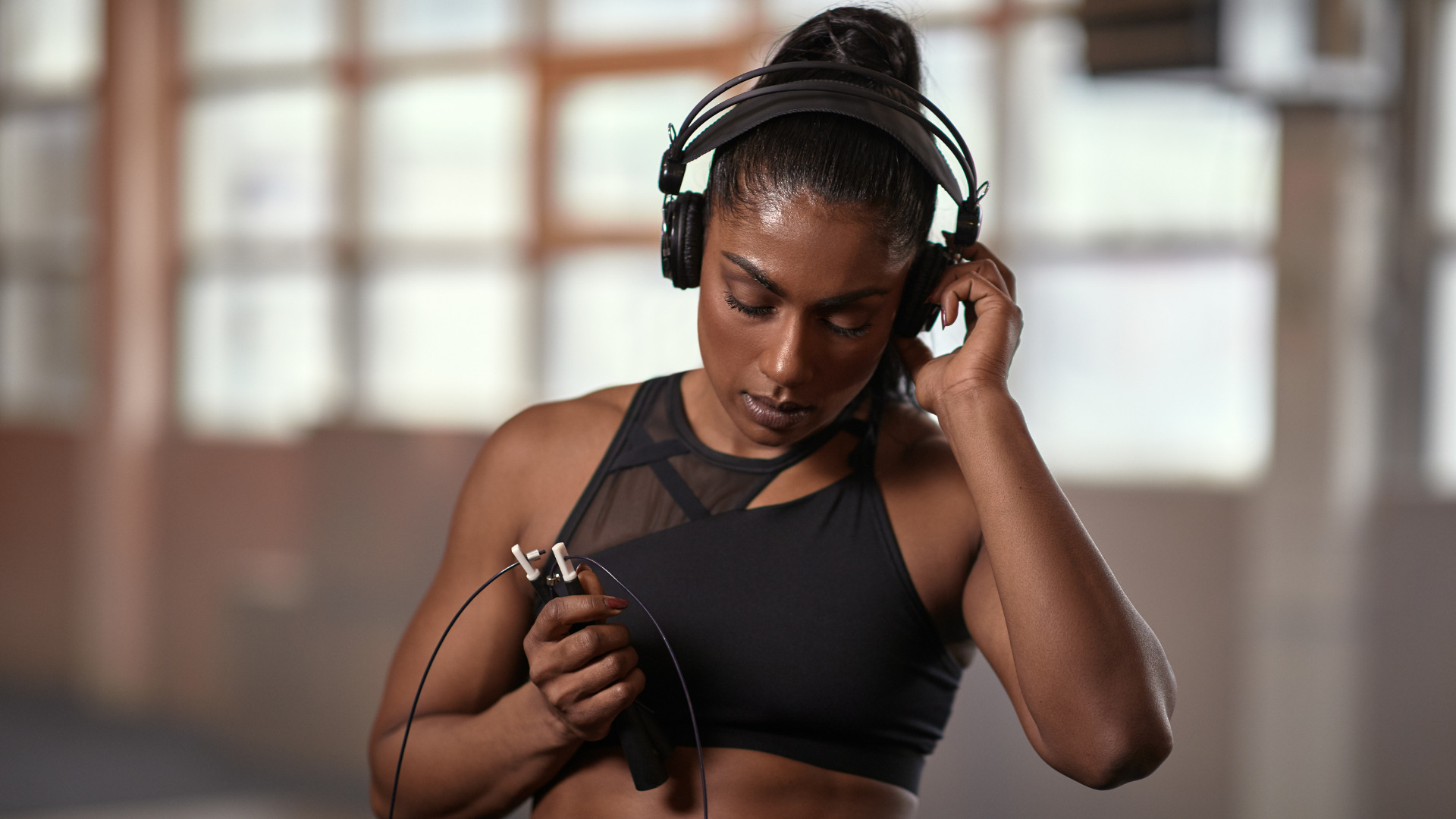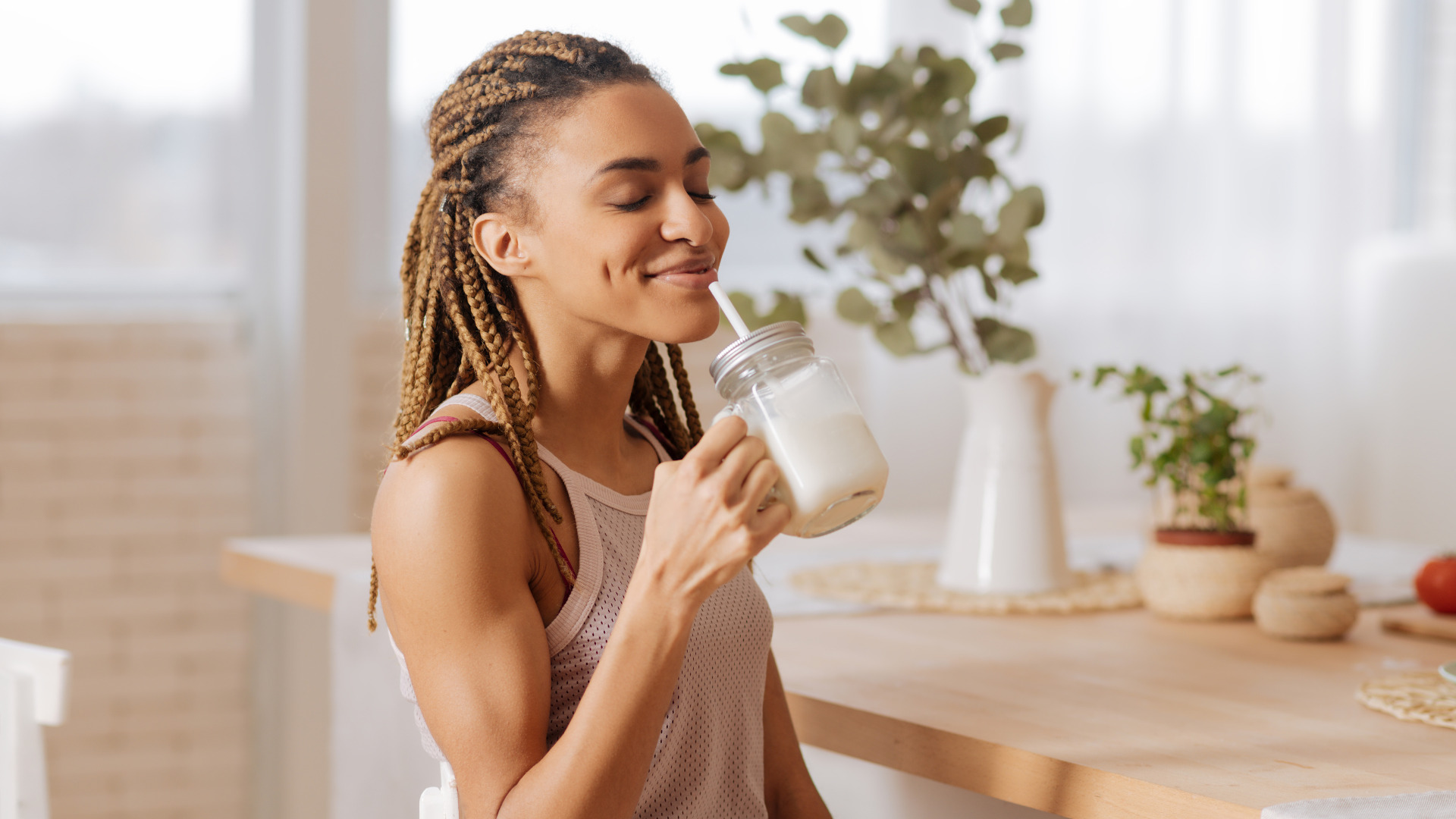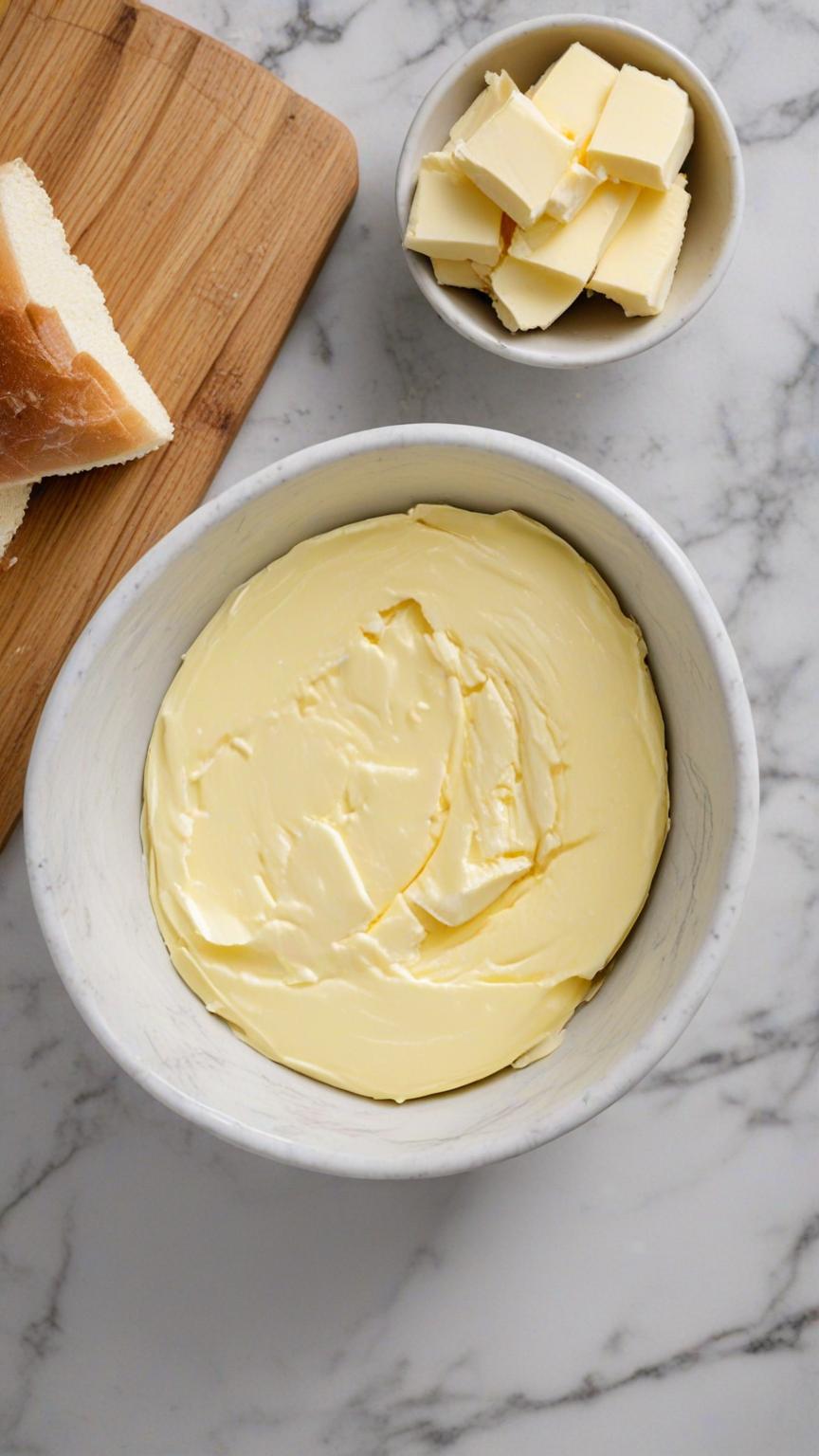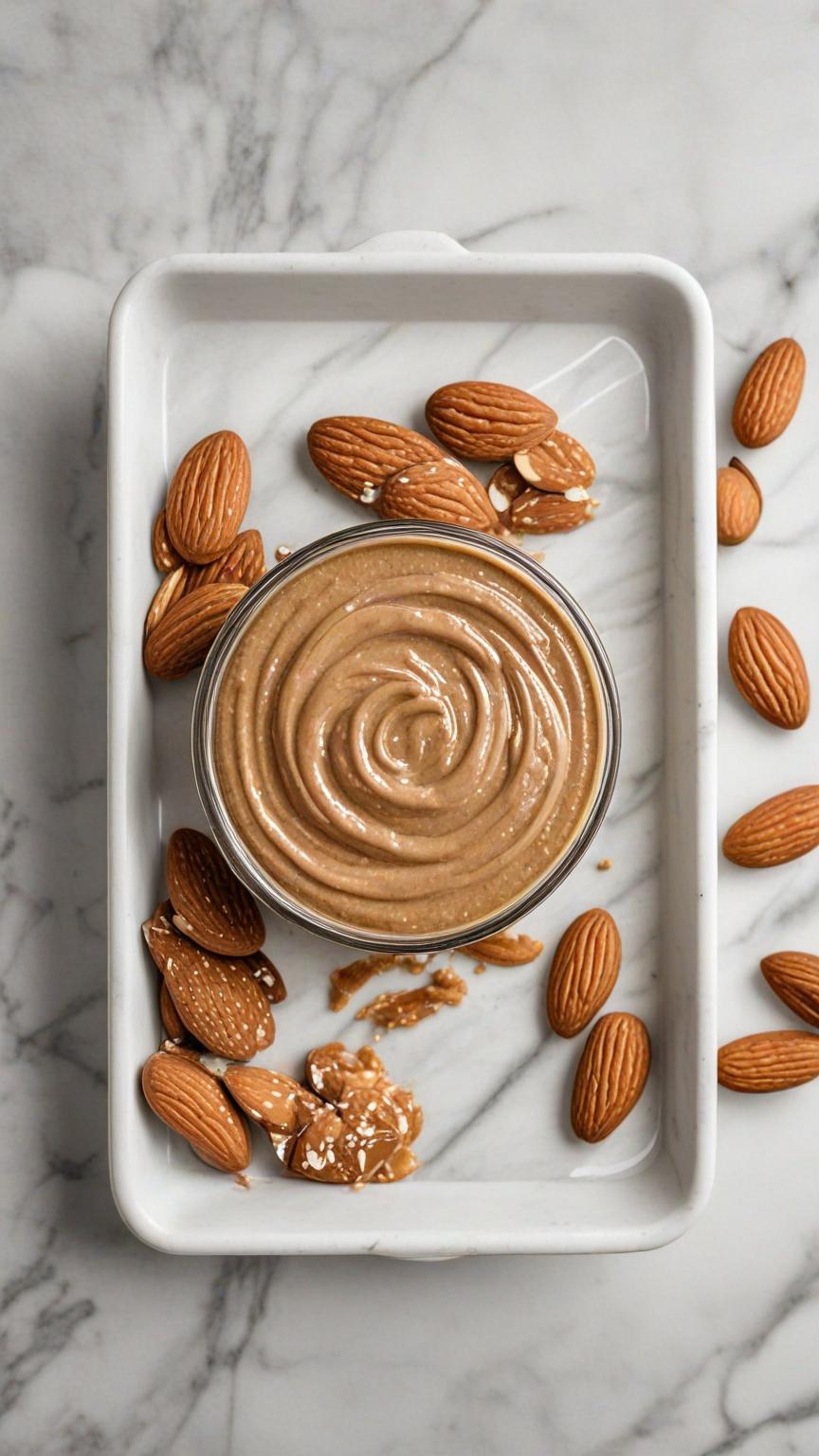Vegan Coconut Caramel Macchiato Indulging in a delicious cup of coffee is a cherished ritual for many. With countless variations available, one particular concoction has captured the hearts of coffee enthusiasts worldwide – the coconut caramel macchiato. This delightful beverage combines the rich flavors of coconut, caramel, and espresso, resulting in a truly decadent treat. In this blog post, we will explore the origins, ingredients, preparation methods, and variations of the coconut caramel macchiato. Can I use any kind of non-dairy milk for this recipe? Yes you may! Additionally, non-dairy milk, such as almond milk, oat milk, or soy milk, is often used to add creaminess. How do I enhance the taste of this coffee? You can enhance the taste by adding more caramel syrup or a little agave or sugar, but just keep in mind as you enhance the recipe. You will be increasing the calories. Can I make variations of this coffee? While the classic coconut caramel macchiato is undeniably delicious, there are several variations you can explore to suit your taste preferences: 1. Iced Coconut Caramel Macchiato: Simply follow the same preparation steps but pour the mixture over ice instead of hot espresso for a refreshing twist. 2. Traditional Coconut Caramel Macchiato: Replace plant-based dairy products with regular alternatives such as 2 percent milk or whole milk to create a non-restricted version of this delightful beverage. 3. Salted Coconut Caramel Macchiato: Add a pinch of sea salt to your caramel sauce or sprinkle some on top of your macchiato for a delightful sweet-salty combination. Products from the Recipe Order products and have it shipped straight to your door step! Pin Print Coconut Caramel Macchiato Recipe by Custom Curves Course: DrinksCuisine: VeganDifficulty: Easy Servings 1 servingsPrep time 5 minutesCalories 50 kcal Ingredients 1 shot of espresso or 1/2 cup of brewed coffee 1/2 cup of unsweetened coconut milk 1 tablespoon of sugar-free caramel syrup Directions Combine coffee, coconut milk, and caramel syrup. Serve over ice. The coconut caramel macchiato is a truly indulgent coffee creation that combines the tropical flavors of coconut with the rich sweetness of caramel and the boldness of espresso. Whether you enjoy it hot or iced, this delightful beverage is sure to satisfy your cravings for a unique and decadent coffee experience. Share: Facebook Pinterest Email Social Media Facebook-f Youtube Pinterest Instagram Tiktok Most Popular Get The Latest Updates Subscribe To Our Weekly Newsletter No spam, notifications only about new post, updates. Categories On Key Related Posts
The Beauty of Collagen: Is It Worth Adding to Your Routine?
The Beauty of Collagen: Is It Worth Adding to Your Routine? In the world of health and wellness, collagen has gained significant attention in recent years. You’ve probably seen it advertised in various forms, from supplements and powders to skincare products and even beverages. But what exactly is collagen, and should you consider incorporating it into your daily routine? In this blog post, we’ll explore the fascinating world of collagen, its benefits, and whether or not you should be taking it. What Is Collagen? Collagen is the most abundant protein in the human body, accounting for about one-third of our total protein composition. It is often described as the “glue” that holds our body together because it provides structural support to various tissues, including skin, bones, tendons, ligaments, and muscles. Collagen is made up of amino acids, particularly glycine, proline, and hydroxyproline, which play crucial roles in maintaining the health of our connective tissues. As we age, our body’s natural collagen production begins to decline, which can lead to various signs of aging, such as wrinkles, joint pain, and decreased skin elasticity. Types of Collagen There are several types of collagen found in the human body, with Type I, Type II, and Type III being the most common: Type I Collagen: This type is abundant in the skin, tendons, ligaments, bones, and organs. It provides tensile strength and support to these structures. Type II Collagen: Found in cartilage, this type of collagen is crucial for joint health and flexibility. Type III Collagen: Often found in skin, blood vessels, and other tissues, Type III collagen contributes to skin elasticity and the overall structure of organs. Should You Be Taking Collagen? Now that we have a basic understanding of collagen, let’s explore whether or not you should consider taking collagen supplements or incorporating collagen-rich foods into your diet. Here are some benefits of taking Collagen: Skin Health: Collagen supplements may improve skin hydration, elasticity, and reduce the appearance of wrinkles, fine lines, and sagging skin. Joint Health: Type II collagen supplements have been shown to alleviate joint pain and support overall joint function, making them beneficial for individuals with conditions like osteoarthritis. Hair and Nail Health: Collagen may promote hair and nail growth and reduce brittleness. Gut Health: Collagen can help strengthen the gut lining, potentially improving digestion and reducing symptoms of conditions like leaky gut syndrome. Muscle Mass: Collagen supplements may help maintain and increase muscle mass, especially in combination with resistance training. Bone Health: Collagen is a component of bone matrix, and some studies suggest it may contribute to bone density and strength. Wound Healing: Collagen may accelerate wound healing and tissue repair. It’s important to note that while collagen supplements offer potential benefits, individual results can vary. Furthermore, a balanced diet rich in collagen-containing foods, such as bone broth, fish, and lean meats, can also contribute to your collagen intake. Consult a Healthcare Professional Before adding collagen supplements to your routine, it’s essential to consult with a healthcare professional, especially if you have underlying health conditions or allergies. They can provide personalized guidance and ensure that collagen supplementation is safe and suitable for you. Collagen is a vital protein that plays a crucial role in maintaining the health and integrity of various tissues in the body. While collagen supplements offer potential benefits for skin, joints, and overall health, it’s essential to approach them with caution and consult a healthcare professional before starting any supplementation regimen. Make sure to focus on a balanced diet that includes collagen-rich foods can also help support your body’s collagen needs. Ultimately, whether or not you should be taking collagen depends on your individual health goals and needs. Now that you know this…. You decide! Share: Facebook Pinterest Email Social Media Facebook-f Youtube Pinterest Instagram Tiktok Most Popular Get The Latest Updates Subscribe To Our Weekly Newsletter No spam, notifications only about new post, updates. Categories On Key Related Posts
Stay in the Zone: The Best Headphones for Working Out
Stay in the Zone: The Best Headphones for Working Out Whether you’re pumping iron, hitting the pavement, or flowing through yoga poses, a good soundtrack can be your ultimate workout partner. But not all headphones are created equal, especially when it comes to workouts. You need a pair that can keep up with your active lifestyle, delivering high-quality audio while staying firmly in place. In this blog post, we’ll explore the best headphones for working out, catering to various preferences and budgets. Get ready to elevate your fitness routine with the perfect pair of headphones! 1. Apple AirPods Pro “The Premium Pick” Buy on Apple Buy on Amazon Apple’s AirPods Pro are a top-tier choice for fitness enthusiasts. They offer active noise cancellation to block out distractions, a snug in-ear fit, and excellent sound quality. Their IPX4 water resistance rating means they can withstand sweat and light rain, making them ideal for intense workouts. Plus, their quick pairing with Apple devices is a huge convenience. 2. Jabra Elite 85t “The Compact and Comfortable” Buy on Jabra Buy on Amazon The Jabra Elite 85t earbuds are known for their compact design and exceptional comfort. They provide a secure fit and are rated IP55 for water and dust resistance. The sound quality is excellent, and they offer customizable EQ settings via the Jabra Sound+ app. With a long battery life and a durable build, these earbuds are perfect for extended gym sessions. 3. Bose Sport Earbuds “The Immersive Sound” Buy on Bose Buy on Amazon Bose is synonymous with high-quality sound, and their Sport Earbuds are no exception. These wireless earbuds offer clear, immersive audio and a comfortable, secure fit. They are IPX4 rated and designed to stay put during rigorous workouts. Additionally, the Bose Music app allows you to personalize your listening experience. 4. Powerbeats Pro “The Headphones Built for Fitness” Buy on Beats By Dre Buy on Amazon Powerbeats Pro, designed by Beats (a subsidiary of Apple), are built specifically for athletes. They feature ear hooks for a secure fit and are IPX4 sweat and water-resistant. With a powerful bass and long-lasting battery life, these earbuds are great for those who enjoy intense, bass-heavy tunes during their workouts. 5. Anker SoundCore Spirit X2 “The Budget-Friendly Option” Buy on SoundCloud If you’re looking for a budget-friendly option without compromising on quality, the Anker SoundCore Spirit X2 is worth considering. These wireless earbuds offer a secure fit, impressive sound quality, and an IP68 rating for water and dust resistance. With a wallet-friendly price tag, they’re a solid choice for budget-conscious fitness enthusiasts. 6. Sony WF-SP800N “The Active Noise Cancellation” Buy on Sony Buy on Amazon Sony’s WF-SP800N earbuds combine powerful audio with active noise cancellation, allowing you to focus on your workout. They are rated IP55 for water and dust resistance and feature an ambient sound mode to stay aware of your surroundings. These earbuds also offer extra bass for those who like their music with a punch. Finding the best headphones for working out depends on your specific needs and preferences. Whether you prioritize sound quality, a secure fit, or budget-friendliness, there’s a pair of workout headphones out there for you. Remember to consider factors like water resistance, comfort, and battery life when making your decision. Whichever headphones you choose, the right pair can elevate your fitness routine and keep you motivated with your favorite tunes or podcasts. So, gear up and get ready to crush your fitness goals while enjoying top-notch audio quality! Share: Facebook Pinterest Email Social Media Facebook-f Youtube Pinterest Instagram Tiktok Most Popular Get The Latest Updates Subscribe To Our Weekly Newsletter No spam, notifications only about new post, updates. Categories On Key Related Posts
How to Improve Mental Health for Athletes
How to Improve Mental Health for Athletes Being an athlete is not just about physical strength and endurance; it also requires strong mental health. Just like physical training, taking care of our mental well-being is crucial for optimal athletic performance. In this blog post, we will explore effective strategies to improve mental health for athletes. 1. Prioritize Mindfulness and Relaxation Techniques In the fast-paced world of sports, athletes must learn to navigate high levels of stress and pressure. Engaging in mindfulness techniques like deep breathing, visualization, and meditation can help athletes calm their minds, reduce anxiety, and improve focus. By incorporating regular relaxation practices into their routine, athletes can optimize their mental state and achieve better athletic performance. 2. Seek Support and Open Up About Mental Health Athletes often face unique challenges that can impact their mental health. It is crucial for athletes to reach out to mental health professionals, coaches, and teammates to discuss any concerns. Creating a safe and supportive environment will allow athletes to address their mental health needs effectively. Seeking professional help can provide athletes with the necessary tools and coping strategies to overcome challenges and maintain mental well-being. 3. Foster Self-Awareness and Positive Thinking Developing self-awareness is essential for athletes to understand their mental and emotional state. By monitoring their thoughts, emotions, and behaviors, athletes can identify any negative thinking patterns that may hinder their performance. Promoting positive self-talk and self-confidence can help athletes build resilience and enhance their mental well-being. Regular practice of techniques like affirmations and visualization can foster a positive mindset, leading to improved athletic performance. 4. Incorporate Mental Recovery Into Training Regimen Physical recovery is a well-known aspect of athlete training, but mental recovery often gets overlooked. Athletes need to allow ample time for rest, relaxation, and enjoyable activities outside of their training schedule. Proper sleep, engagement in hobbies, and spending quality time with loved ones can prevent burnout and rejuvenate the mind. Prioritizing mental recovery is just as important as physical training to maintain peak performance levels. 5. Set Realistic Goals and Avoid Overpressure Ambition and drive are commendable qualities in athletes, but unrealistic goals and excessive pressure can negatively impact mental health. Setting achievable and realistic goals helps maintain motivation and prevents feelings of failure. Athletes should focus on individual progress rather than comparing themselves to others. By managing expectations and finding a healthy balance, athletes can reduce stress and enjoy the journey of their athletic pursuits. Physical health and mental health are intertwined for athletes striving for excellence. By incorporating mindfulness techniques, seeking support, fostering self-awareness, prioritizing mental recovery, and setting realistic goals, athletes can improve their overall mental health and achieve peak performance. Remember, taking care of our minds is essential for success and well-being in sports and beyond. Embrace these strategies and bring out the best version of yourself both on and off the field. Share: Facebook Pinterest Email Social Media Facebook-f Youtube Pinterest Instagram Tiktok Most Popular Get The Latest Updates Subscribe To Our Weekly Newsletter No spam, notifications only about new post, updates. Categories On Key Related Posts
Protein-Packed Delights: 5 Weight Gain Shake Recipes You’ll Love
Protein-Packed Delights: 5 Weight Gain Shake Recipes You’ll Love Gaining weight can be just as challenging as losing it for some individuals, especially those with a fast metabolism or trying to build muscle. Protein shakes are an excellent addition to your diet when looking to increase your caloric intake and gain healthy weight. In this blog post, we’ll introduce you to five delicious and nutritious protein shake recipes that can help you achieve your weight gain goals. 1. Banana Nut Bliss Shake Ingredients: 2 ripe bananas 1/4 cup chopped walnuts 1 cup whole milk 1 scoop of vanilla protein powder 1 tablespoon honey A pinch of cinnamon (optional) Instructions: Combine the bananas, walnuts, milk, protein powder, honey, and cinnamon (if desired) in a blender. Blend until smooth and creamy. Pour into a glass and enjoy the nutty goodness. This shake is packed with healthy fats from walnuts and natural sugars from bananas, making it a calorie-rich option for weight gain. 2. Peanut Butter Chocolate Shake Ingredients: 2 tablespoons peanut butter 1 tablespoon cocoa powder 1 cup almond milk 1 scoop of chocolate protein powder 1 banana 1 tablespoon honey (optional) Instructions: Blend the peanut butter, cocoa powder, almond milk, protein powder, banana, and honey (if desired) until smooth. Pour into a glass and indulge in the rich, chocolatey goodness. This shake combines the satisfying taste of peanut butter and chocolate while providing ample protein and healthy fats to support your weight gain journey. 3. Mango Madness Shake Ingredients: 1 cup frozen mango chunks 1 cup Greek yogurt 1 scoop of vanilla protein powder 1/2 cup orange juice 1 tablespoon honey Instructions: Blend the frozen mango chunks, Greek yogurt, protein powder, orange juice, and honey until smooth. Pour into a glass and savor the tropical delight. Mangoes are not only delicious but also rich in vitamins and antioxidants, making this shake a healthy choice for those looking to gain weight. 4. Oatmeal Cookie Shake Ingredients: 1/2 cup rolled oats 1 scoop of cookies and cream protein powder 1 cup whole milk 1 tablespoon almond butter 1/2 teaspoon vanilla extract 1 tablespoon maple syrup Instructions: Blend the rolled oats, protein powder, milk, almond butter, vanilla extract, and maple syrup until smooth. Pour into a glass and enjoy the taste of an oatmeal cookie in liquid form. This shake combines the heartiness of oatmeal with the deliciousness of cookies and cream, making it a calorie-dense option for weight gain. 5. Berry Blast Shake Ingredients: 1 cup mixed berries (strawberries, blueberries, raspberries) 1 scoop of berry-flavored protein powder 1 cup Greek yogurt 1/2 cup water or milk 1 tablespoon honey (optional) Instructions: Blend the mixed berries, protein powder, Greek yogurt, water or milk, and honey (if desired) until smooth. Pour into a glass and enjoy the burst of berry flavors. This shake is packed with antioxidants from the berries, protein from the yogurt, and can help you gain weight while keeping your diet nutritious. These five protein shake recipes offer a delightful and nutritious way to help you gain weight. Incorporate these shakes into your daily routine, and remember to combine them with a balanced diet and regular exercise to achieve your weight gain goals in a healthy and sustainable way. Cheers to a tastier and weightier you! Share: Facebook Pinterest Email Social Media Facebook-f Youtube Pinterest Instagram Tiktok Most Popular Get The Latest Updates Subscribe To Our Weekly Newsletter No spam, notifications only about new post, updates. Categories On Key Related Posts
How to Get Bigger Thighs
How to Get Bigger Thighs If you’re looking to add volume and definition to your thighs, there are several effective methods that can help you achieve your goal quickly and safely. In this guide, we’ll explore the best exercises, dietary changes, and lifestyle modifications that can help you get thicker thighs fast. Exercise Your Way to Thicker Thighs Squats Squats are the most effective exercise for building thicker thighs. These exercises target the quadriceps, hamstrings, and glutes, which are the primary muscle groups in your thighs. To perform squats correctly, follow these steps: Stand with your feet shoulder-width apart and your hands on your hips Slowly lower your body down into a squat or lunge position, keeping your back straight and your knees behind your toes. Push through your heels to return to the starting position. Lunges Lunges are another exercises for building thicker thighs. To perform lunges correctly, follow these steps: Stand with your feet shoulder-width apart and your hands on your hips Step back and slowly lower your body down into a s lunge position, keeping your back straight Push through your heels to return to the starting position. Repeat with opposite legs Leg Press Leg press is another effective exercises for building thicker thighs. These exercises target the quadriceps and hamstrings, which are responsible for the size and shape of your thighs. To perform leg press correctly, follow these steps: Sit down on a leg press machine with your feet shoulder-width apart on the platform. Push the platform away from you, extending your legs fully. Slowly lower the platform back down to the starting position. Deadlifts Deadlifts are another great exercise for building thicker thighs. This exercise targets the entire lower body, including the quadriceps, hamstrings, and glutes. To perform deadlifts correctly, follow these steps: Stand over the bar with your feet shoulder-width apart. Bend down and grab the bar with your hands shoulder-width apart. Keeping your back straight and your core engaged, lift the bar off the ground and stand up. Lower the bar back down to the starting position. Dietary Changes for Thicker Thighs In addition to exercise, making certain dietary changes can also help you achieve thicker thighs. Here are some tips: Eat More Protein Protein is essential for building and repairing muscle tissue, including the muscles in your thighs. Aim to consume at least 1 gram of protein per pound of body weight daily. Good sources of protein include lean meats, fish, eggs, dairy products, and plant-based options like beans and tofu. Increase Your Caloric Intake To build muscle mass, you need to be in a calorie surplus, meaning you need to consume more calories than your body burns. Aim to increase your daily caloric intake by 250-500 calories to support muscle growth. Eat Carbohydrates Carbohydrates provide energy for your workouts and help you recover faster. Aim to consume at least 2-3 grams of carbohydrates per pound of body weight daily. Good sources of carbohydrates include whole grains, fruits, vegetables, and starchy vegetables like sweet potatoes and corn. Lifestyle Modifications for Thicker Thighs In addition to exercise and diet, making certain lifestyle modifications can also help you achieve thicker thighs. Here are some tips: Get Enough Sleep Sleep is essential for muscle recovery and growth. Aim to get at least 7-9 hours of sleep per night. Reduce Stress High levels of stress can lead to muscle breakdown and a slower rate of muscle growth. Find ways to manage stress, such as meditation, yoga, or deep breathing exercises. Stay Hydrated Proper hydration is essential for muscle function and recovery. Aim to drink at least 8-10 glasses of water per day. Getting thicker thighs requires a combination of exercise, dietary changes, and lifestyle modifications. By incorporating the exercises, dietary tips, and lifestyle modifications outlined in this guide, you can achieve thicker thighs quickly and safely. Remember to be patient and consistent, as building muscle takes time and effort. Share: Facebook Pinterest Email Social Media Facebook-f Youtube Pinterest Instagram Tiktok Most Popular Get The Latest Updates Subscribe To Our Weekly Newsletter No spam, notifications only about new post, updates. Categories On Key Related Posts
How to Reduce Bloating Naturally: 10 Tips for a Flatter Belly
How to Reduce Bloating Naturally: 10 Tips for a Flatter Belly Bloating can strike at the most inconvenient times, making you feel uncomfortable and self-conscious. Whether it’s caused by dietary choices, lifestyle factors, or underlying health issues, there are practical steps you can take to reduce bloating and regain control of your digestive comfort. In this blog post, we’ll explore twelve proven tips that can help you beat the bloat and enjoy a happier, more comfortable life. 1. Stay Hydrated One of the simplest ways to combat bloating is to drink plenty of water. Dehydration can lead to water retention, making you feel puffy and bloated. Aim to consume at least eight glasses of water a day, and consider adding herbal teas, infused water, and foods with high water content, such as cucumbers and watermelon, to your diet. 2. Watch Your Fiber Intake While fiber is essential for digestive health, consuming too much of it, especially insoluble fiber, can lead to bloating and gas. Gradually increase your fiber intake and focus on soluble fiber sources like oats, legumes, and fruits to avoid excessive gas production. 3. Mind Your Portions Overeating can strain your digestive system, leading to discomfort and bloating. Pay attention to portion sizes, and try to eat smaller, more frequent meals throughout the day. This can prevent your stomach from becoming overly full and distended. 4. Slow Down While Eating Eating too quickly can introduce excess air into your digestive system, contributing to bloating. To reduce this risk, chew your food thoroughly, and take your time during meals. This also aids in better digestion and nutrient absorption. 5. Limit Gas-Producing Foods Certain foods are notorious for causing gas and bloating. These include beans, cruciferous vegetables (like broccoli and cauliflower), carbonated beverages, and artificial sweeteners. Reduce your consumption of these foods if you’re prone to bloating. 6. Be Mindful of Food Sensitivities Food intolerances, such as lactose intolerance or gluten sensitivity, can cause significant bloating and discomfort. If you suspect you have a food sensitivity, consider eliminating the suspected trigger foods from your diet or consult a healthcare professional for testing and guidance. 7. Reduce Sodium Intake Excessive sodium intake can lead to water retention, making you feel bloated. To reduce sodium, avoid processed and salty foods, and try seasoning your meals with herbs and spices instead. 8. Probiotics and Digestive Enzymes Probiotics are beneficial bacteria that can help maintain a healthy gut microbiome. Consider taking a probiotic supplement or incorporating probiotic-rich foods like yogurt, kefir, and fermented vegetables into your diet. Digestive enzyme supplements may also aid in better digestion. 9. Stay Active Regular physical activity can promote healthy digestion by preventing constipation and reducing gas buildup. Aim for at least 30 minutes of moderate exercise most days of the week. 10. Manage Stress Stress can disrupt digestion and contribute to bloating. Practice stress-reduction techniques such as deep breathing, meditation, yoga, or spending time in nature to help relax your body and mind. Bloating is a common issue, but it doesn’t have to be a constant companion. By implementing these ten effective strategies, you can reduce bloating, improve your digestive health, and ultimately feel your best. Remember that individual responses to these methods may vary, so it’s essential to find what works best for you through trial and error. If persistent bloating or discomfort persists, consult a healthcare professional to rule out any underlying medical conditions. Share: Facebook Pinterest Email Social Media Facebook-f Youtube Pinterest Instagram Tiktok Most Popular Get The Latest Updates Subscribe To Our Weekly Newsletter No spam, notifications only about new post, updates. Categories On Key Related Posts
Collagen Consumption: Are You Taking the Right Amount?
Homemade Oil Free Vegan Butter
Homemade Oil-Free Vegan Butter Recipe As the popularity of veganism continues to rise, so does the demand for plant-based alternatives to traditional dairy products. One such staple in many kitchens is butter, which adds richness and flavor to a wide range of dishes. Fortunately, creating a vegan version of this beloved ingredient is easier than you might think. In this blog post, we will guide you through a simple yet delicious recipe for vegan butter that can be made at home. Homemade oil-free vegan butter is a versatile and delicious alternative to traditional dairy butter. It is a oil- free plant-based spread that mimics the creamy texture and rich flavor of butter, making it an excellent choice for those following a vegan or dairy-free diet. This homemade version allows you to have full control over the ingredients, ensuring a healthier and more sustainable option. Can I use any kind of non-dairy milk for this recipe? To make homemade oil-free vegan butter, you will need a few simple ingredients that are easily accessible. Additionally, non-dairy milk, such as almond milk or soy milk, is often used to add creaminess. How do I enhance the taste of homemade oil-free vegan butter? One common ingredient in homemade oil free vegan butter is nutritional yeast. Nutritional yeast not only adds a subtle cheesy flavor but also provides essential nutrients like B vitamins. Other flavorings such as salt, apple cider vinegar, and lemon juice can be added to enhance the taste and mimic the tanginess of traditional butter. One of the advantages of homemade vegan butter is that it allows customization according to personal preferences. By experimenting with different oils and flavorings, individuals can create their own unique variations of vegan butter tailored to their taste buds. What can I use homemade oil-free vegan butter on?Homemade vegan butter can be used in various ways in cooking and baking. It can be spread on toast, used for sautéing vegetables, or incorporated into recipes that call for butter. It can also be used as a substitute for dairy butter in baking, providing moisture and richness to cakes, cookies, and pastries. In addition to being a suitable option for vegans and those with dairy allergies, homemade vegan butter also offers environmental benefits. The production of traditional dairy butter requires significant amounts of water, land, and resources. By opting for homemade oil-free vegan butter, individuals can contribute to reducing their carbon footprint and promoting sustainability. Products from the Recipe You dont have to cook if you dont feel like it. Order Vegan Butter and have it shipped straight to your door step! Pin Print Homemade Oil-Free Vegan Butter Recipe Recipe by Custom Curves Course: SidesDifficulty: Medium Servings 8 servingsPrep time 4 hours Cooking time 2 hours Calories 104 kcal Ingredients 1 cup raw cashews 1/4 cup unsweetened soy milk 2 tablespoons nutritional yeast 1 tablespoon apple cider vinegar 1 teaspoon salt (adjust to taste) 1/2 teaspoon turmeric powder (for color) 1/4 teaspoon garlic powder (optional) Directions Soak the cashews in water overnight or for at least 4 hours. This will help soften them and make them easier to blend. Drain the soaked cashews and rinse them thoroughly. In a high-speed blender or food processor, combine the soaked cashews, unsweetened soy milk, nutritional yeast, apple cider vinegar, salt, turmeric powder, and garlic powder (if using). Blend until smooth and creamy. 4. If the mixture is too thick, you can add a little more soy milk to achieve the desired consistency. Once blended, transfer the mixture into a small container or silicone mold. Place the container in the refrigerator and allow the mixture to set for at least 2 hours or until firm. Once firm, your homemade oil-free vegan butter is ready to use! You can spread it on toast, use it for baking, or melt it for cooking purposes. Notes Store your homemade oil-free vegan butter in an airtight container in the refrigerator for up to two weeks. You can also freeze it for longer storage. Serving size is 2 tbsp for this recipe It is important to note that while homemade oil-free vegan butter can be a healthier alternative to dairy butter, it should still be consumed in moderation. Like any other high-fat food, excessive consumption may lead to weight gain and other health issues. It is always recommended to consult with a healthcare professional or registered dietitian for personalized dietary advice. In conclusion, homemade vegan butter is a versatile and customizable plant-based spread that provides a delicious alternative to traditional dairy butter. With its creamy texture and rich flavor, it can be used in various cooking and baking applications. By making your own vegan butter at home, you have control over the ingredients and can contribute to a more sustainable food system. In conclusion, homemade vegan butter is a versatile and customizable plant-based spread that provides a delicious alternative to traditional dairy butter. With its creamy texture and rich flavor, it can be used in various cooking and baking applications. By making your own vegan butter at home, you have control over the ingredients and can contribute to a more sustainable food system. Share: Facebook Pinterest Email Social Media Facebook-f Youtube Pinterest Instagram Tiktok Most Popular Get The Latest Updates Subscribe To Our Weekly Newsletter No spam, notifications only about new post, updates. Categories beetroot sugar vs cane sugar 0 breakfast 0 can i take vitamin d and vitamin c together 0 classic 1 collagen 1 dessert 1 dinner 1 drinks 3 gluten-free 0 how can i gain weight quickly 0 lunch 2 non-dairy 5 nut-free 0 oil-free 2 pescatarian 3 protein 1 protein based 0 side 1 sugar-free 0 vegan 7 vegetarian 6 weight gain recipes 0 weight loss 1 weight loss by juicing 0 weight loss recipes 0 On Key Related Posts
Oil Free Almond Butter
Oil Free Almond Butter Almond butter is a delicious and nutritious spread that can be enjoyed on toast, in smoothies, or as a dip for fruits and vegetables. While traditional almond butter recipes often include added oils, it is possible to make a healthier version without any oil. In this recipe, we will guide you through the process of making oil-free almond butter at home. How do I enhance the taste of homemade oil-free almond butter? Homemade almond butter is a versatile and delicious ingredient that can be used in a variety of ways. Its creamy texture and nutty flavor make it a great addition to both sweet and savory dishes. Here are some ideas on how to use homemade almond butter: 1. Spread: One of the most common uses for almond butter is as a spread. You can use it as a healthier alternative to traditional spreads like peanut butter or Nutella. Spread it on toast, bagels, or crackers for a quick and nutritious snack. You can also add a drizzle of honey or sprinkle some cinnamon on top for extra flavor. 2. Smoothies: Almond butter can be a great addition to smoothies, adding creaminess and richness. Simply blend it with your favorite fruits, vegetables, and liquid base (such as almond milk or coconut water) for a nutritious and filling smoothie. It pairs well with ingredients like bananas, berries, spinach, and cocoa powder. 3. Baking: Almond butter can be used in various baked goods to add moisture and flavor. You can substitute it for other nut butters or even regular butter in recipes like cookies, brownies, muffins, and cakes. It works particularly well in recipes that call for nuts or have a nutty flavor profile. 4. Dips and Sauces: Homemade almond butter can be used as a base for dips and sauces. You can mix it with ingredients like yogurt, lemon juice, garlic, and herbs to create a creamy dip for vegetables or pita chips. It can also be thinned out with water or oil to make a flavorful sauce for noodles or stir-fries. 5. Salad Dressings: Almond butter can be incorporated into salad dressings to add richness and depth of flavor. Combine it with ingredients like olive oil, vinegar, mustard, honey, and herbs to create a creamy dressing that pairs well with salads containing fruits, vegetables, or grains. 6. Protein Bars and Energy Balls: Almond butter can be a key ingredient in homemade protein bars and energy balls. Its natural oils help bind the ingredients together, while its nutty flavor adds depth. Mix it with oats, dried fruits, nuts, seeds, and sweeteners like honey or maple syrup to create a nutritious and portable snack. 7. Stir-Fries: Almond butter can be used as a sauce or garnish for stir-fried dishes. Its creamy texture and nutty taste complement vegetables, tofu, chicken, or shrimp. You can mix it with soy sauce, ginger, garlic, and other seasonings to create a flavorful sauce that coats the ingredients. 8. Oatmeal: Add a spoonful of almond butter to your morning oatmeal for extra creaminess and flavor. It pairs well with toppings like sliced bananas, berries, nuts, seeds, or a drizzle of honey. 9. Ice Cream Topping: Drizzle homemade almond butter over your favorite ice cream flavors for a decadent treat. The combination of cold ice cream and warm almond butter creates a delightful contrast in textures and temperatures. 10. Homemade Granola: Incorporate almond butter into your homemade granola recipe for added richness and flavor. Mix it with oats, nuts, seeds, dried fruits, sweeteners like honey or maple syrup, and bake until golden brown for a crunchy and nutritious breakfast option. Products from the Recipe. You dont have to cook if you dont feel like it. Order Vegan Butter and have it shipped straight to your door step! Pin Print Oil Free Almond Butter Recipe by Custom Curves Course: SidesCuisine: VeganDifficulty: Easy Servings 8 servingsPrep time 20 minutesCooking time 10 minutesCalories 231 kcal Ingredients 2 cups raw almonds 1/4 teaspoon salt (optional) 1 tablespoon honey or maple syrup (optional) Directions Preheat your oven to 350°F (175°C). Spread the almonds evenly on a baking sheet and roast them for about 10 minutes until they become fragrant and slightly golden. This step helps to enhance the flavor of the almonds. Allow the roasted almonds to cool completely before proceeding to the next step. This will prevent them from turning into almond butter too quickly. Once cooled, transfer the almonds to a high-powered blender or food processor. You can also use a mortar and pestle if you prefer a chunkier texture. Blend or process the almonds on high speed for about 5 minutes, scraping down the sides occasionally. At first, the almonds will turn into a fine powder resembling almond flour. As you continue blending, the almonds will release their natural oils and start clumping together. Keep blending until you achieve a smooth and creamy consistency. This may take some time, so be patient. If desired, add salt and sweetener of your choice (honey or maple syrup) to enhance the flavor of your almond butter. Blend for an additional minute to incorporate these ingredients evenly. Once you have reached your desired consistency, transfer the oil-free almond butter to an airtight container and store it in the refrigerator for up to two weeks. Notes It’s important to use raw almonds for this recipe, as roasted almonds may already contain added oils. If you prefer a crunchy almond butter, you can reserve a small portion of the roasted almonds and chop them finely. Stir them into the creamy almond butter once it’s ready. Feel free to adjust the sweetness and saltiness according to your taste preferences. Oil-free almond butter is a type of almond butter that is made without the addition of any oils. Almond butter is typically made by grinding almonds into a smooth and creamy paste, similar to peanut butter. While some commercial brands of almond butter may contain added oils, such as vegetable oil or palm oil, oil-free almond butter is made solely from almonds. Oil-free almond










